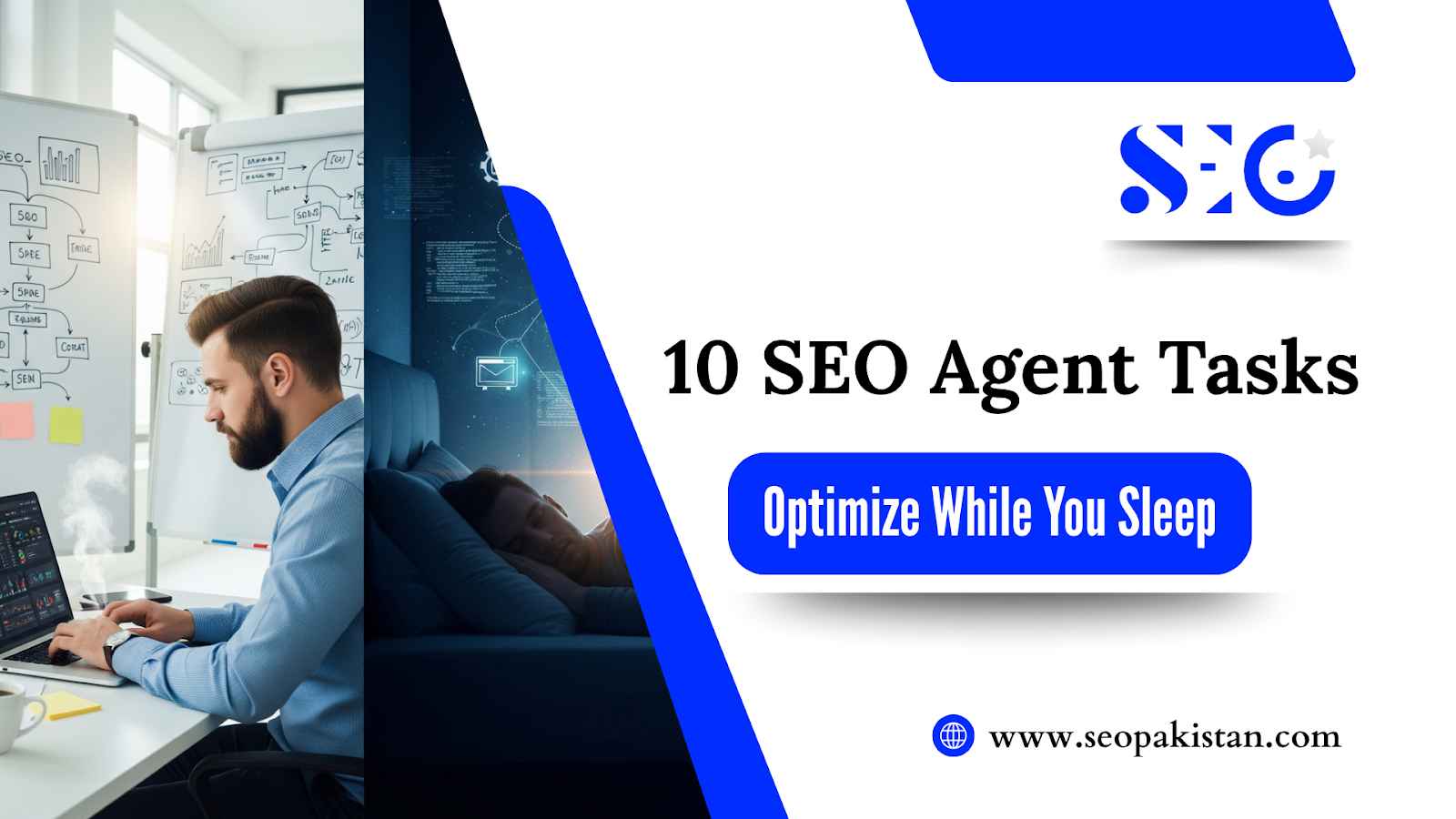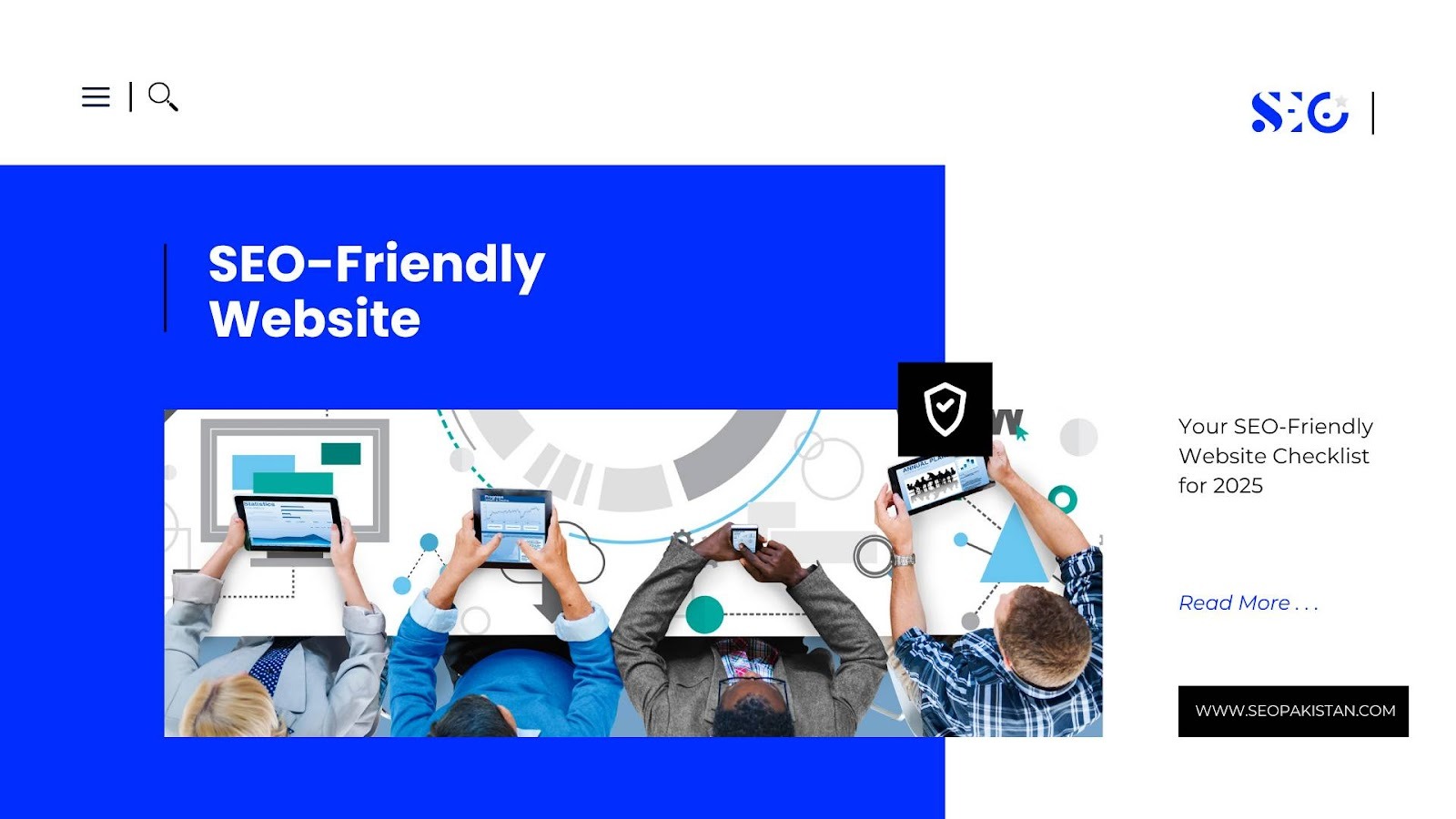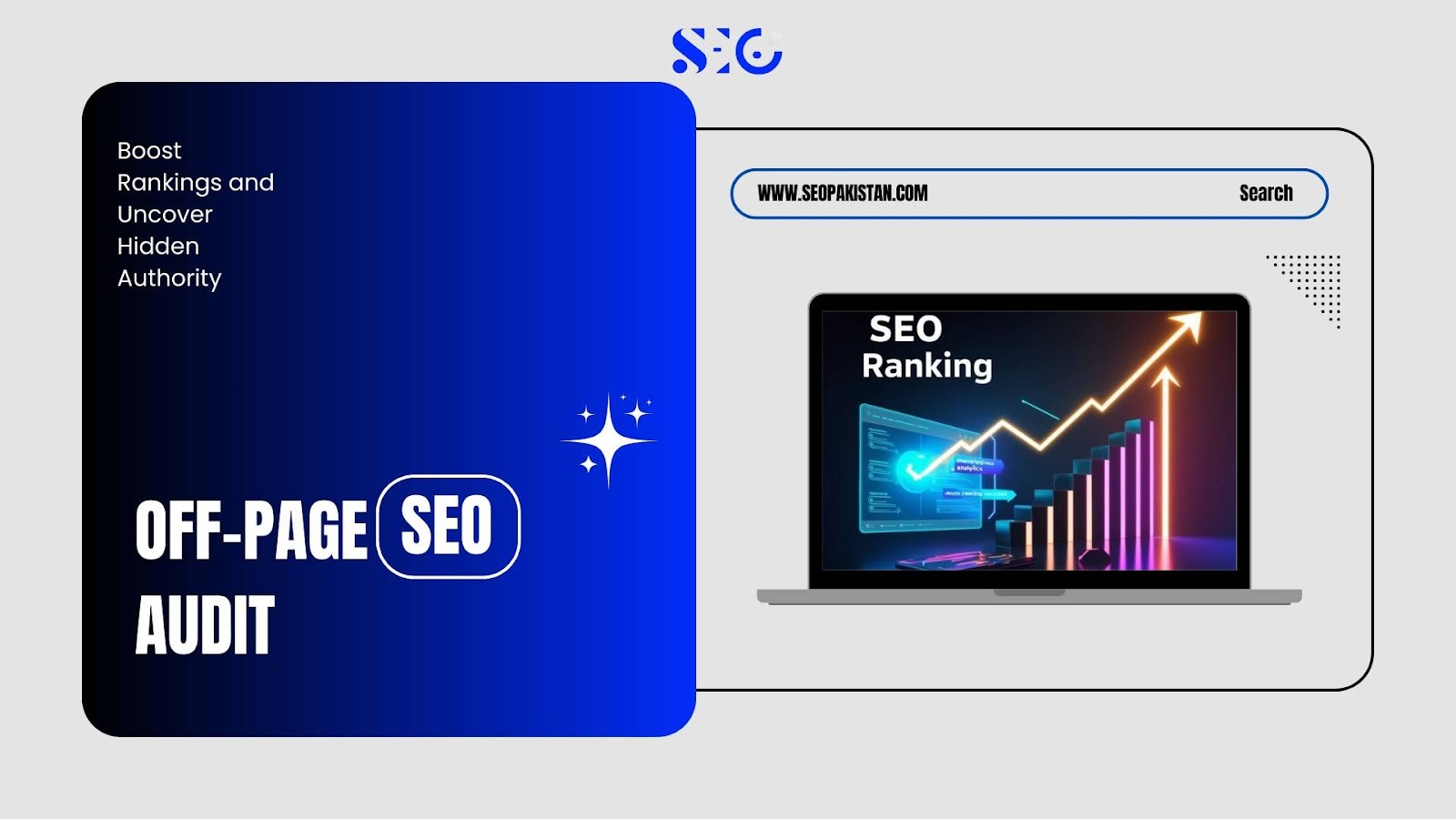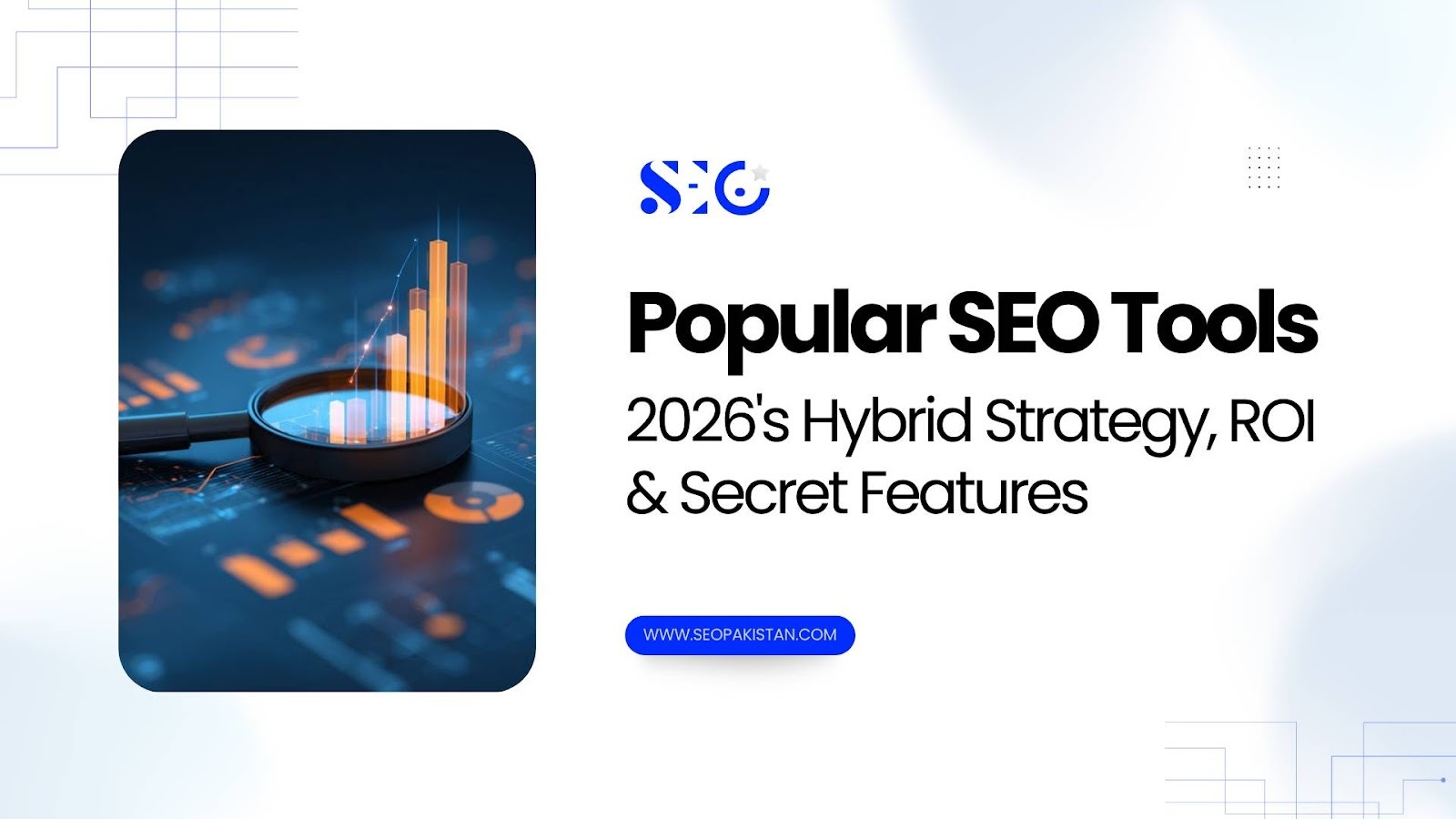I remember sitting in my office at 2 AM, frantically checking keyword rankings for the third time that day. My clients expected results, but I was drowning in endless daily tasks that felt like digital busywork. Sound familiar?
After years of building SEO strategies for hundreds of businesses, I’ve learned that effective SEO isn’t about constant, frantic work. The most successful agencies I know aren’t the ones working the hardest; they’re the ones working the smartest.
The secret? Building systems and processes that literally “optimize while you sleep.” When you establish the right foundational tasks, your SEO efforts compound automatically, delivering results long after you’ve moved on to the next project.
This guide will reveal the 10 critical SEO agent tasks that set the foundation for passive, long-term organic growth. These aren’t just random to-do items; they’re strategic investments that free you from the daily grind while delivering powerful business results.
Strategic SEO: Turning Tasks into Long-Term Value
The difference between a good SEO agent and a great one isn’t how many hours they work. It’s how they create systems that continue delivering value long after the initial task is completed.
Every strategic task an SEO agent performs should have what I call “sleep optimization” potential, the ability to generate ongoing benefits without constant manual intervention.
Here’s how specific SEO tasks translate into passive, long-term business growth:
| SEO Agent Task | Passive “Optimize While You Sleep” Benefit | Business Impact |
| Technical Audit | Prevents ranking and user experience issues before they happen | Stable traffic & improved conversion rates |
| Internal Linking | Automatically distributes authority and improves site navigability | Higher rankings for key pages & increased user engagement |
| Automated Reporting | Provides real-time performance insights without manual effort | Faster strategic adjustments & clear ROI tracking |
| Evergreen Content Refresh | Keeps existing content relevant and ranking for years | Consistent organic traffic & sustained authority |
The Foundational Framework: Setting the Stage for Success
Before you can create systems that work passively, you need to establish the core elements that everything else builds upon.
Task 1: The Comprehensive Technical Audit
Technical SEO serves as the backbone for all other aspects of a successful website. When I start working with a new client, this is always my first step, and for good reason.
An experienced SEO agent ensures no detail is overlooked by addressing key areas, including:
- Site speed: Identifying and resolving issues that slow down your website’s performance.
- Crawl errors: Detecting and eliminating errors that disrupt search engine bots from properly accessing your site.
- Mobile-friendliness: Ensuring your website provides a seamless experience on mobile devices, a critical ranking factor.
- SSL certificates: Verifying secure connections to build trust with users and search engines alike.
- URL structure: Simplifying URLs to enhance clarity and boost search engine performance.
All findings are documented in a prioritized action plan designed to build a robust, stable foundation for long-term SEO success. Once these technical enhancements are implemented, the improvements work continuously in the background, safeguarding search rankings 24/7 without further intervention.
Task 2: Strategic Keyword Research & Mapping
Generic keyword research is a waste of time. Strategic keyword mapping aligns search terms with actual business goals and user intent.
- An SEO agents begins by thoroughly analyzing what your ideal customers are actively searching for, focusing on intent-driven keywords rather than chasing high-volume terms that may not align with your goals.
- These targeted keywords are then strategically mapped to specific pages, creating a well-structured content architecture that benefits both users and search engines.
- This upfront, data-driven approach ensures that every piece of content developed afterward aligns with a cohesive strategy.
- Instead of scrambling to find keywords for new content, businesses gain clarity on exactly what to target, saving time and maximizing ROI.
Task 3: Optimizing Your Core Content Pillars
Content pillars are comprehensive, authoritative pages that establish your expertise on key topics. Think of them as the skyscrapers of your content strategy; everything else connects back to these towering pieces of authority.
An SEO agents focuses on identifying 5-10 core topics that are most critical to a business’s goals and audience.
- Pillar pages are then created or optimized to cover each topic in-depth, targeting high-value keywords to maximize visibility.
- These pillar pages act as powerful link magnets, connecting and supporting other relevant content across the website.
- Once established and ranking well, these pages consistently attract organic traffic and enhance the site’s authority over time.
- New content is seamlessly linked to these pillars, enabling the efficient distribution of authority and strengthening the overall SEO strategy.
The “Set It and Forget It” Engine: Automating On-Page & Content
The most powerful SEO systems are those that automatically optimize new content without requiring manual intervention every single time.
Task 4: Implementing Internal Linking Strategies
Internal linking is often overlooked but plays a vital role in enhancing a website’s SEO performance and user experience. A well-structured internal linking strategy not only improves navigation but also ensures search engines understand the relevance and hierarchy of your content.
By systematically distributing authority across your site, internal linking can significantly boost rankings and engagement. Here’s how the SEO agent approaches internal linking to maximize impact:
- Systematic Authority Distribution: Internal linking strategies are designed to automatically distribute authority throughout the site. This ensures that every page, especially high-value ones, gains visibility and contributes to overall site performance.
- Topic Clusters for Better Context: Related content is grouped into topic clusters, allowing users and search engines to navigate seamlessly through interconnected articles. This structure enhances relevance and improves rankings for targeted keywords.
- Clear Content Hierarchies: Establishing clear hierarchies guides users and search engines to the most important pages on the site.
- Scalable Framework: A robust internal linking strategy allows new content to naturally fit into the existing structure. Each new piece of content benefits from the authority of the overall framework while contributing to its growth.
- Improved User Experience: Thoughtful internal linking keeps visitors engaged by guiding them to related, valuable content.
Task 5: Optimizing On-Page Elements
Consistency kills chaos. As someone who’s passionate about simplifying processes, I’ve found that creating templates and checklists is the key to keeping things organized and efficient. Instead of painstakingly optimizing pages one by one, I build systems that make sure every new page is SEO-ready from the moment it goes live.
Here’s what I include in my framework:
- Standardized title tags and meta descriptions
- Clear heading structures for easy readability
- Optimized image alt text for accessibility and SEO
- Schema markup for better search engine understanding
- Content formatting guidelines to naturally include target keywords (without keyword stuffing)
With these templates in place, your content team doesn’t need to master every detail of on-page SEO. The optimization happens seamlessly, following a proven, battle-tested framework.
Building Authority While You’re Offline: Off-Page & Reputation
True SEO power comes from external signals that vouch for your expertise and trustworthiness. The key is creating systems that build these signals consistently, even when you’re not actively working on them.
Task 6: Automated Link Building with Strategic Outreach
It’s about identifying genuine opportunities and building relationships that naturally lead to high-quality backlinks.
- Set up automated monitoring systems: Use tools that continuously track brand mentions, competitor backlinks, and key industry conversations. These systems run 24/7 to identify real-time link-building opportunities.
- Identify link-building opportunities: Automated systems uncover cases where a brand is mentioned without a backlink or where competitors gain backlinks. They also highlight relevant discussions or articles where valuable input or content can add value.
- Qualify opportunities automatically: Automation sifts through vast amounts of data, qualifying opportunities based on relevance, domain authority, and potential value. This ensures only high-quality prospects are prioritized.
- Strategic outreach: Once opportunities are identified, personalized and thoughtful outreach messages help establish genuine connections with website owners, bloggers, or journalists, focusing on building long-term relationships.
- Build a link-building engine: Combining automation and strategic human interaction creates an efficient workflow. The system continuously identifies and evaluates prospects while outreach and relationship management bring in high-quality backlinks.
- Focus on continuous improvement: Regularly analyzing results helps refine targeting, messaging, and overall efficiency, turning the link-building process into a more effective, streamlined engine over time.
Task 7: Monitoring & Managing Your Online Reputation
Your online presence is a crucial factor in determining how search engines rank your brand. Factors like reviews, brand mentions, and overall sentiment contribute directly to your visibility. Managing this effectively can elevate your brand and safeguard its credibility. Here’s how I help:
- Real-Time Monitoring: I set up advanced tools to track every mention of your brand across social media, review platforms, news sites, and industry blogs. You’ll never miss a beat.
- Instant Alerts: Get immediate notifications when your brand is mentioned, whether it’s a glowing review or constructive criticism, so you can respond quickly and effectively.
- Proactive Issue Management: Address potential problems before they escalate by staying ahead of negative feedback and turning it into an opportunity to improve your reputation.
- Amplify the Positive: Highlight and share positive mentions to boost your brand’s visibility and build stronger trust with your audience.
With these systems in place, reputation management becomes seamless, empowering you to maintain control while building a stronger, more trustworthy brand image.
The Continuous Loop: Monitoring & Maintenance
SEO success requires consistent monitoring and strategic adjustments based on real data. The most effective approach automates data collection while focusing human expertise on interpretation and action.
Task 8: Competitor Monitoring and Analysis
Your competitors aren’t standing still, and neither should your SEO strategy. But manually checking competitor activities is inefficient and often incomplete.
- Set up automated competitor monitoring to track:
- Ranking changes
- New content publication
- Backlink acquisition
- Technical improvements across key competitors
- Use collected insights to inform:
- Content creation strategies
- Link-building priorities
- Technical optimization efforts
- Continuous monitoring runs in the background, providing:
- Alerts for significant changes
Task 9: Automated Performance Reporting
SEO agents create detailed automated reports that go beyond just numbers. These reports track essential metrics like keyword rankings, organic traffic, conversion rates, and technical health indicators of your website. But the real value lies in what’s beneath the surface: identifying patterns, spotting trends, and flagging significant changes that could signal opportunities or potential issues before they escalate.
For example, if your keyword rankings suddenly drop or organic traffic spikes unexpectedly, the report will highlight these anomalies. Are competitors outpacing you? Is there a new search trend you should capitalize on? Or maybe there’s a technical issue affecting performance. These insights ensure you stay agile and proactive in optimizing your SEO strategy.
The best part? It’s all automated. No more manually piecing together spreadsheets or wasting hours compiling data every week or month.
Task 10: Proactive Technical Maintenance & Schema Markup
Automated monitoring systems are implemented to continuously check for technical issues, broken links, missing schema markup, and other factors that could impact performance. These systems generate alerts when problems are detected, enabling immediate fixes before rankings are affected.
Consistent schema markup implementation is a key focus. Templates and automated processes are established to ensure new content automatically includes the appropriate structured data, helping search engines better understand and display the content.
Conclusion
These 10 SEO agent tasks outlined above transform SEO from a daily struggle into a powerful, automated engine for growth. When properly implemented, these systems work together to create compound improvements that continue delivering results long after the initial setup.
The real power comes when everything works together as one system. Strong technical setups support your content plans. Internal links help build authority. Automated tools keep everything running smoothly.
True SEO expertise lies not in working harder, but in creating systems that work for you. When your SEO infrastructure operates automatically, your business can continue growing even while you sleep.
Are you ready to create a system that optimizes itself automatically? The strategic implementation of these tasks requires experience and expertise to do them correctly. Partner with an SEO expert to drive sustainable growth. Start with SEO Pakistan today!
Frequently Asked Questions
How long for SEO results?
Significant results from these foundational tasks typically appear in 3 to 6 months as the strategy compounds over time.
Can I do these tasks myself?
While possible, they require significant time and expertise, which is why hiring an agents is often more efficient.
What tools do SEO agents use?
Agents use a suite of professional tools like Ahrefs, Screaming Frog, and Google Analytics to automate tasks and gather data.
Agents vs. Automated Tool: Which is better?
An agents is a human expert who uses automated tools strategically, whereas a tool is just a piece of software.
Why is a technical audit important?
A technical audit is crucial because it ensures search engines can properly crawl and index your site, providing a stable foundation for all other SEO efforts.













